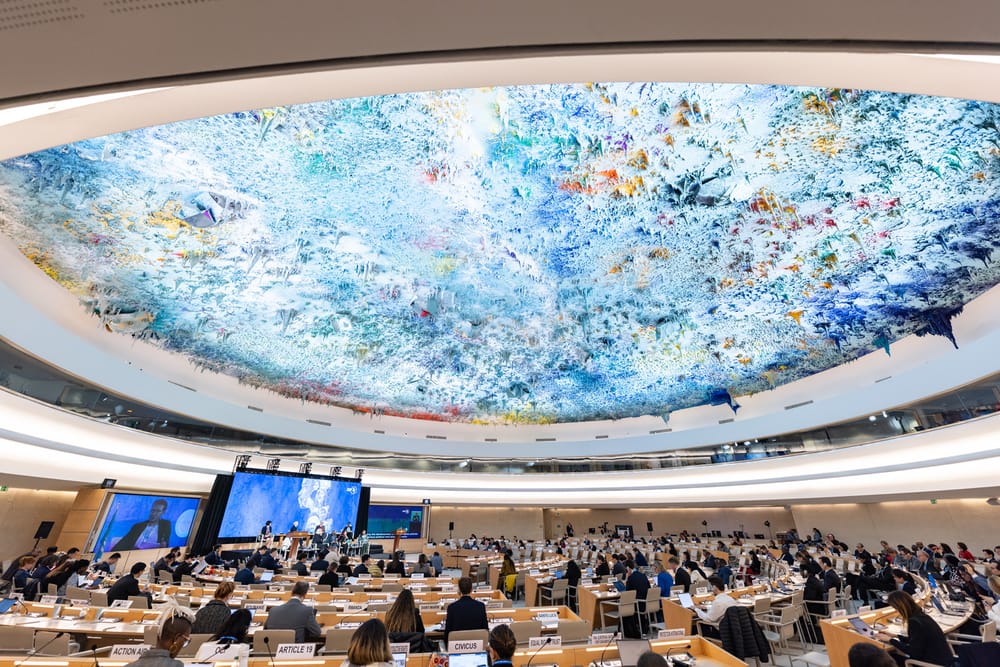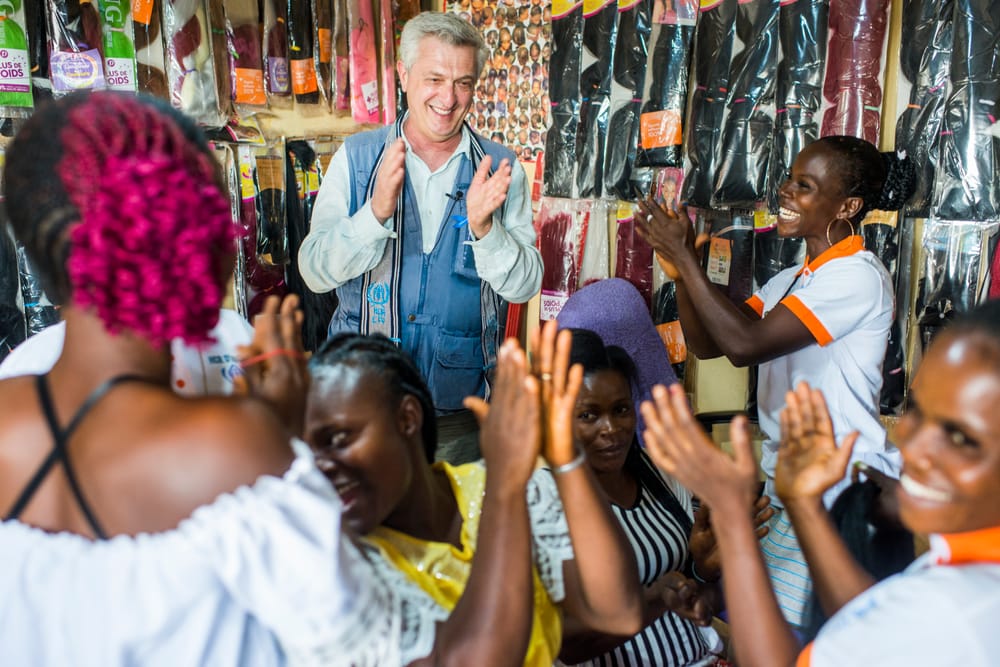By Mark Zeitoun, Natasha Carmi, Laura Turley, Mara Tignino
Sources of the conflict
Even before the latest round of bloodletting in the conflict began in October, virtually all the water sources of Gaza were too polluted to drink. Ninety-seven percent was loaded with nitrates, salt, or bacteria. The aquifer has, in fact, been under pressure since it was forced to sustain hundreds of thousands of Palestinians who were displaced from their homes in British Mandate Palestine during the Nakba (catastrophe), and the creation of the State of Israel in 1948. The pressures increased once Israel occupied Gaza in 1967 and started a policy of ‘de-development’. The first military order Israel issued in the West Bank of the same year was to stop Palestinians from drilling wells.
The 1995 Oslo II Accords defined water as one of the ‘permanent status issues’ (in addition to the right of return of refugees and the status of Jerusalem) whose resolution was meant to be dealt with after five years. Though many had hoped that the Oslo Accords would create a Palestinian state next to Israel, Edward Said labelled an earlier draft the ‘Palestinian Versailles’ because it ignored historic injustices and the underlying ideology that granted more rights to the land to one people. Noam Chomsky predicted the proposed distribution of water would resemble “the outcome of an elephant and a fly”.
The critics have been proven right. In the distribution of the shared water, as per the Oslo Accords, roughly 90 percent was allocated to about 7 million people in Israel, and the remaining 10 percent to 3.5 million people in the West Bank and Gaza. The Accords also birthed the Joint Water Committee which has jurisdiction over the West Bank only (and not Israel), meaning that approval of water projects for long-existing Palestinian villages is conditioned on reciprocal approval of projects to serve new Israeli settlements. The Palestinian Authority has, in effect, been coerced into consenting to territorial colonisation. The Joint Water Committee ignored water in Gaza entirely, obliging the water authorities there to plan to make large and elaborate desalination treatment plants. These plans never materialised because no donor proved willing to invest millions into large infrastructures that risked being destroyed by Israel, as was the fate of the main electrical power plant. At the Annapolis round of negotiations in 2008, the Palestinian side proposed that the water conflict be ended by distributing the flows according to the principles of international water law. However, US mediation insisted that the negotiators dismiss the talk of law or rights and only consider technical solutions like desalination, no matter how unrealistic.
The inequitable distribution of control over water has been stoking the broader Israeli-Palestinian conflict for nearly thirty years.
Waterborne disease will linger
Israel’s “total siege” has now barred most fuel and water from entering Gaza, and the situation is as desperate as it was predictable. Since wastewater treatment plants have run out of fuel, raw sewage now mixes with hospital waste and the heavy metals of tens of thousands of missiles puncturing the soil. Surgeons cannot sterilise their tools. Parents risk their lives to get water for their children, and tens of thousands of toddlers still suffer from acute diarrhoea and hepatitis A, which is rampant. Meanwhile, the Israeli army seems to be preparing to flood the Hamas tunnels under Gaza with seawater, which would contaminate the aquifer even more, and make life in Gaza as uninhabitable for future generations as it is for the current ones.
It is not a situation most people would wish on their enemies. Indeed, weaponising water in this way is against every humanitarian principle the world has developed. It is a “crime against humanity” in the words of the Special Rapporteur on the Human Right to Safe Drinking Water and Sanitation.
IHL obliges Israel, as the occupying power, to take all measures in its power to restore and ensure, as far as possible, public order and civil life. IHL also calls for the protection of objects ‘indispensable for the survival of the civilian population’ (ICRC’s study on Customary IHL, Rule 54), such as water treatment plants. The Geneva Principles on the Protection of Water Infrastructure push in the same direction, while the Protection of the Environment in Relation to Armed Conflict (PERAC) principles and Declaration against the Use of Explosive Weapons In Populated Areas (EWIPA) demonstrate the broad and growing political support to end the harm we inflict on the environment and in crowded places, like Gaza.
UN Security Council Resolution 2573 adopted in 2021 makes it clear that critical civilian infrastructure must be protected under all circumstances. The informal ‘Arria Formula’ meeting sponsored by Mozambique and Switzerland at the Security Council earlier this year sought to take this further.
Sparing water systems from the carnage would reduce the suffering, allow a ray of civility to shine.
So long as missiles are being fired, many organisations will continue to ‘double down’ on appeals to respect IHL. This may be unfashionable, but is important because the rules of war maintain an order of humanity amidst the violence. Sparing water systems from the carnage would reduce the suffering, allow a ray of civility to shine, and – perhaps – usher discussions that will inevitably occur once the dust settles.
Beyond the Oslo Accords
If those of us in the comfort of International Geneva are unable to point the way forward, the future will be written by those who created and allowed the carnage. The test of relevance of the diplomatic community, then, is whether it can support a political future which is founded in principles. Most members repeat the mantra of the Oslo-inspired ‘two-state solution’, however, at the risk of repeating the mistakes of the past.
This is where we can learn from water. The Palestinian will for self-determination is widely recognised in international law and stems from the people’s dispossession of their land. The Palestinian-Israeli conflict may be fuelled by violence, injustice and revenge, but remains territorial at heart.
Water ignores the borders that politicians and geographers have laid down on the territory, and every effort they have made to divide the people who live there. The water pipelines that establish Israeli settlements on top of West Bank hills run past Palestinian villages at their foot. Palestinians living on the Jordan River’s West Bank are literally fenced off from it. The raw sewage caused by the carnage in Gaza flows around the borders to the intake structures of desalination plants in Israel.
The land is small and fragmented. Meeting Palestinian demands for water in the face of the settler project (in the West Bank) has proven unworkable. Sustainable stewardship of an over-stressed and polluted aquifer while under occupation (in Gaza) is not possible. Managing water independently across the three territories is nonsensical, and Oslo-inspired attempts to co-manage water have led to further colonisation, injustice, and tension.
Water tells us that the diplomatic solution of promoting the old model of two states is neither just nor realistic.
Water tells us that the diplomatic solution of promoting the old model of two states is neither just nor realistic. Many Palestinians and Israelis who have witnessed decades of failed diplomacy declare that the water, like the land, must be shared. They push for the rule of international water and humanitarian law, equal political rights and opportunity for everybody in this territory. These voices are not yet organised politically, but the results of the incessant weaponisation of water tell us they should be listened to, amplified, and show us the way forward.
About the authors
Mark Zeitoun is Director General of the Geneva Water Hub and Professor of Water Diplomacy at the Graduate Institute of Geneva.
Natasha Carmi is the Water-Peace Programme Manager at the Geneva Water Hub.
Laura Turley is the Science-Policy Interface Manager at the Geneva Water Hub.
Mara Tignino is the International Law Specialist at the Geneva Water Hub and a Senior Lecturer at the Faculty of Law at the University of Geneva.
The opinions expressed in this publication are those of the authors. They do not purport to reflect the opinions or views of the Geneva Policy Outlook or its partner organisations.





